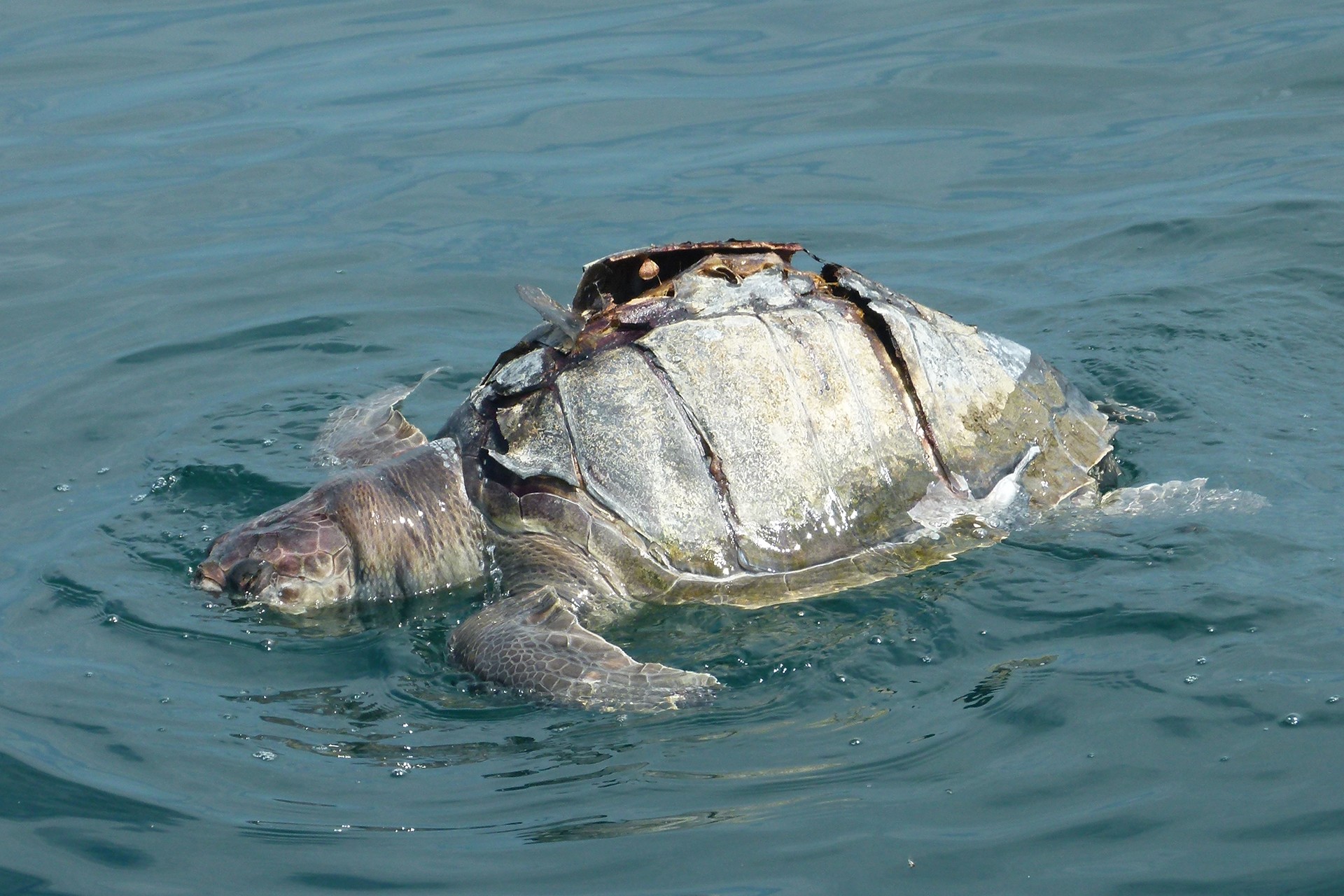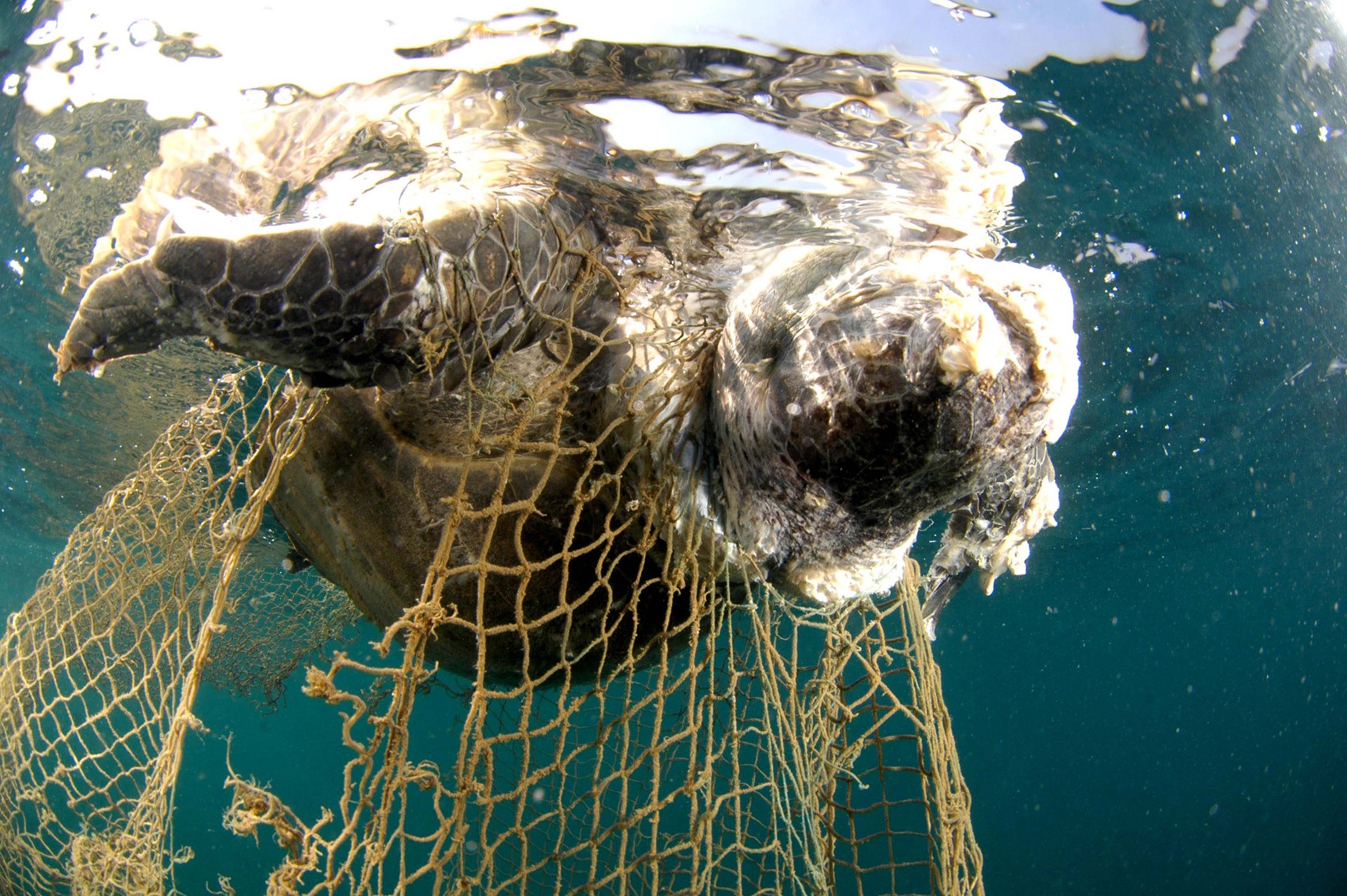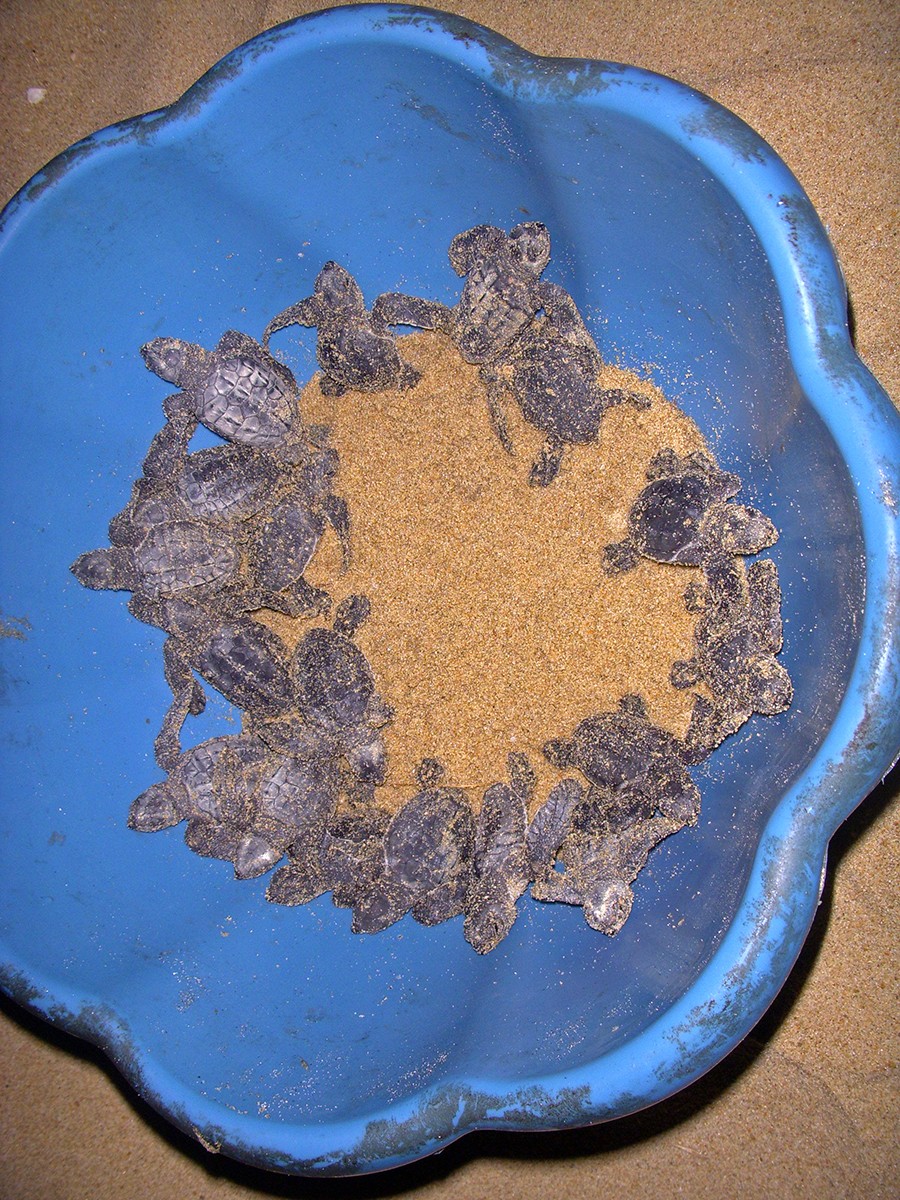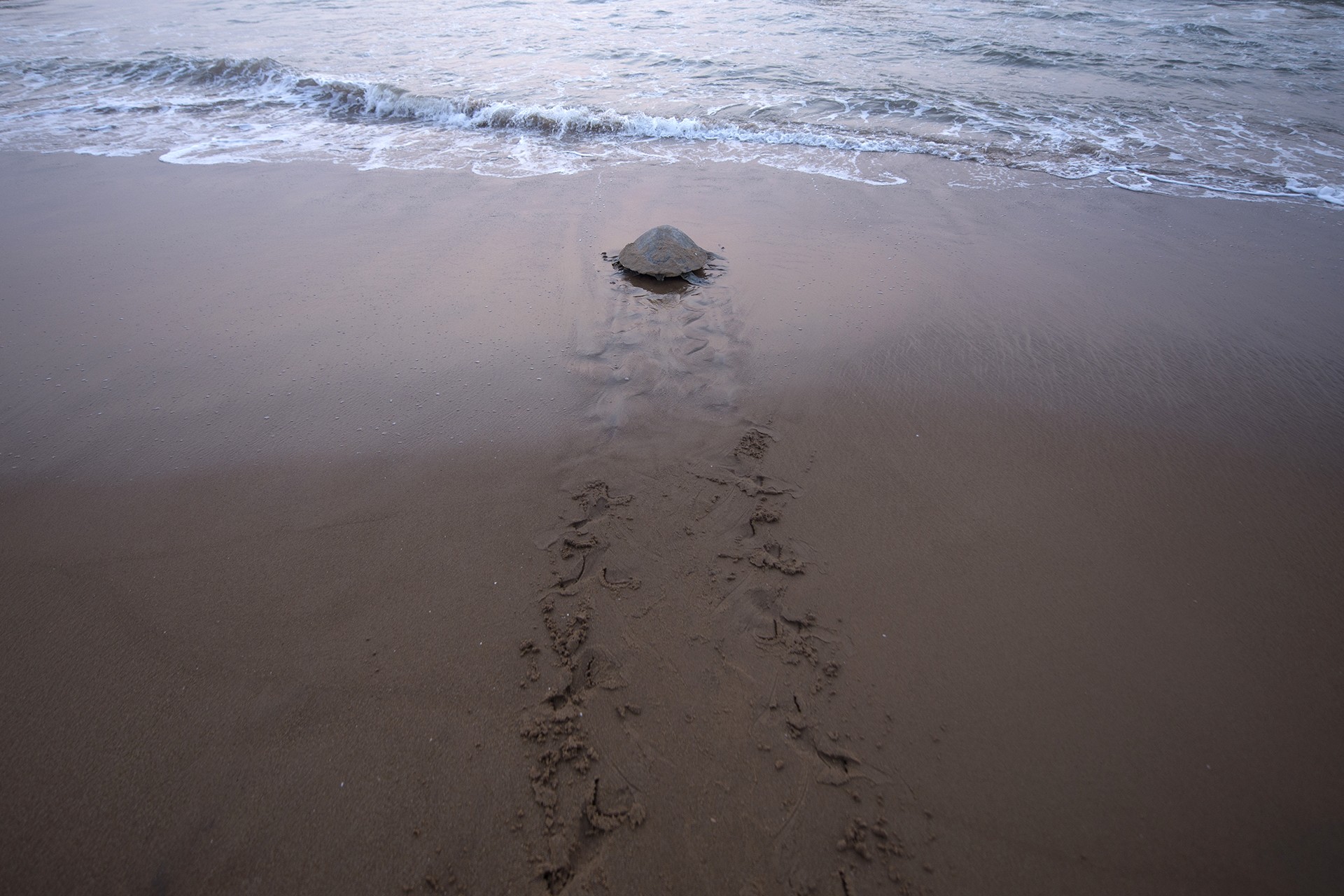Although sea turtles have been around for more than a 100 million years, and are venerated in many cultures worldwide, they are in a dire situation today. Almost all known species of sea turtles are classified as under threat according to the IUCN Red List, with the exception of just one species for which we do not have enough data – the Flatback. The reasons for their decline are numerous and varied. Here are a few of them:
1. Commercial exploitation:
Sea turtles are exploited for their shells and leather. The Hawksbill is valued highly for its colourful shell which is used in manufacturing ornaments and jewellery. In Gujarat and Lakshadweep, sea turtles are also hunted for turtle oil, which is extracted from turtle eggs and used in the manufacture of cosmetics. The illegal pet trade in turtles is also rampant.
2. Food:
Green Turtles are hunted for their meat, while the eggs of almost all species are commonly consumed.
3. Predation:
They also suffer mortality by coming in contact with predators such as dogs.
4. Coastal development/urbanisation:
Both planned and unplanned, these forces are a major threat to sea turtles from the moment they hatch. Instinctively following the light of the horizon to guide themselves back to sea, hatchlings are often confused by the ambient light from structures on the beach. Coastal Zone regulations and legislations, though in place, are weakly enforced, making these issues even more pressing. Other threats to their survival include pollution and habitat modification through sand mining.
5. Bycatch mortality:
Both mechanised and non-mechanised trawlers with gill nets are a threat, as turtles are often caught as bycatch along with fish. As air-breathing reptiles with lungs, sea turtles caught in these nets are unable to surface, and drown. While there is evidence that the intentional hunting of sea turtles is decreasing, incidental mortality unfortunately seems to be on the rise.
Conservation efforts in India
In India, the first conservation efforts began in Odisha and Tamil Nadu in the 1970s. The approaches taken by the two states were actually quite different though. In Odisha, it was a state-led effort which involved working with communities to educate them and increase awareness, while in Tamil Nadu, sea turtle conservation took on a more revolutionary form with a student-led effort that has now evolved into the Student’s Sea Turtle Conservation Network, or SSTCN. After the tsunami of 2004 that ravaged India’s east coast, SSTCN fought hard against the plantation of Casuarina trees across Tamil Nadu’s coast, as part of a massive project by the Tamil Nadu Forest Department (TNFD), funded by the World Bank. Though the Casuarina, which grows well on sandy beaches, could have acted as an important shelterbelt against future tsunamis, it would have decimated nesting turtle sites across the state. After four hard years of parrying with the state government, they were able to prevent further plantations and have the trees that had been planted already removed.
There are also examples of successful conservation efforts from the west coast. In Kerala, a small initiative started by the fishermen of one particular hamlet is one of the most well-known examples of community-based turtle conservation in the country. In 1992, some youth from Kolavipalam in Kerala came across a newspaper article which spoke about the endangered status of Olive Ridleys. Alarmed at the fact that these turtles, who were regular visitors to their beaches, were in danger, they decided to take action and formed a group of 12, called formed a group called the Theeram Prakriti Samrakshana Samiti. They have now become leaders of their community, working on many different social and environmental issues beyond sea turtle conservation as well.
Turtle Excluder Devices, or TEDs, are one of the most effective ways to prevent incidental mortality and help sea turtles escape from these situations, especially in the case of bottom trawling for shrimp. Unfortunately, India has had a complicated history with the use of these devices; in 1989, when the US called for the use of TEDs in all countries it was importing shrimp from, India, along with Malaysia, Pakistan and Thailand opposed the move at the World Trade Organisation on account of the potential loss of shrimp along with the turtles, thereby reducing the overall volume of the catch. Today, the few states that have mandated the use of TEDs for as per their state Marine Fisheries regulations, such as Odisha, Andhra Pradesh and West Bengal, have seen a reduction in incidental mortality of sea turtles through shrimp trawlers, but many other states are yet to follow suit.
Today, sea turtles are included in Schedule 1 of the Wildlife Protection Act of India (1972), granting them special conservation status and making poaching and sale of the animals or animal products illegal. They are also protected internationally under the Migratory Species Convention and the Convention on International Trade on Endangered species of Wild Flora and Fauna (CITES). Thanks to conservation efforts across the world, sea turtles have joined the list of ‘charismatic megafauna’, or large animal species with widespread appeal, such as the Bengal Tiger or the Humpback Whale. Today, the endangered sea turtles are icons of conservation: not just themselves, but also for other species, their habitat or even an entire ecosystem. It remains to be seen, though, if that is enough to save them.
We’ve written about sea turtles before. Read marine researcher Meenakshi Poti’s illustrated story about her time in the Lakshadweep islands researching green turtles; underwater photographer Umeed Mistry’s powerful piece about a man in Odisha, whose sole job it is to clear the beach of Olive Ridley carcasses; and Rohan Chakravarty's comic strip on the leatherback. To learn more about the five sea turtle species found along India's coastline, read this primer by Aadya Singh.
For further reading: Kartik Shanker’s book From Soup to Superstar is a great account of sea turtle conservation in India, for those who’d like a deep dive into the world of sea turtles. Alternatively, you could look up the work of researchers such as Bivash Pandav, one of the world's leading experts on the Olive Ridley, Biswajit Mohanty of Operation Kachhapa fame, Basudev Tripathy, a member of the IUCN SSC Marine Turtle Specialist Group, and Satish ‘Batagur’ Bhaskar, who spent years travelling by himself to remote and often uninhabited islands, monitoring and tagging sea turtles.






